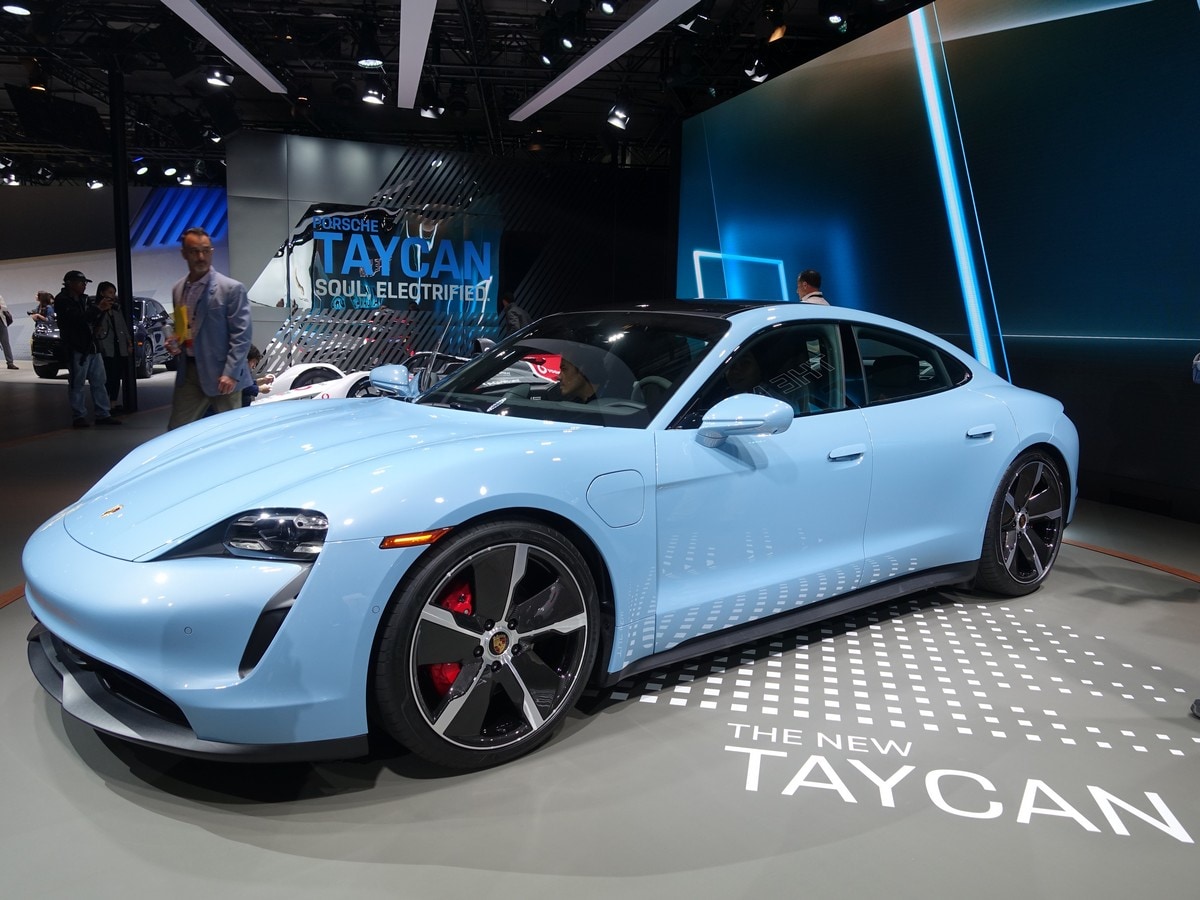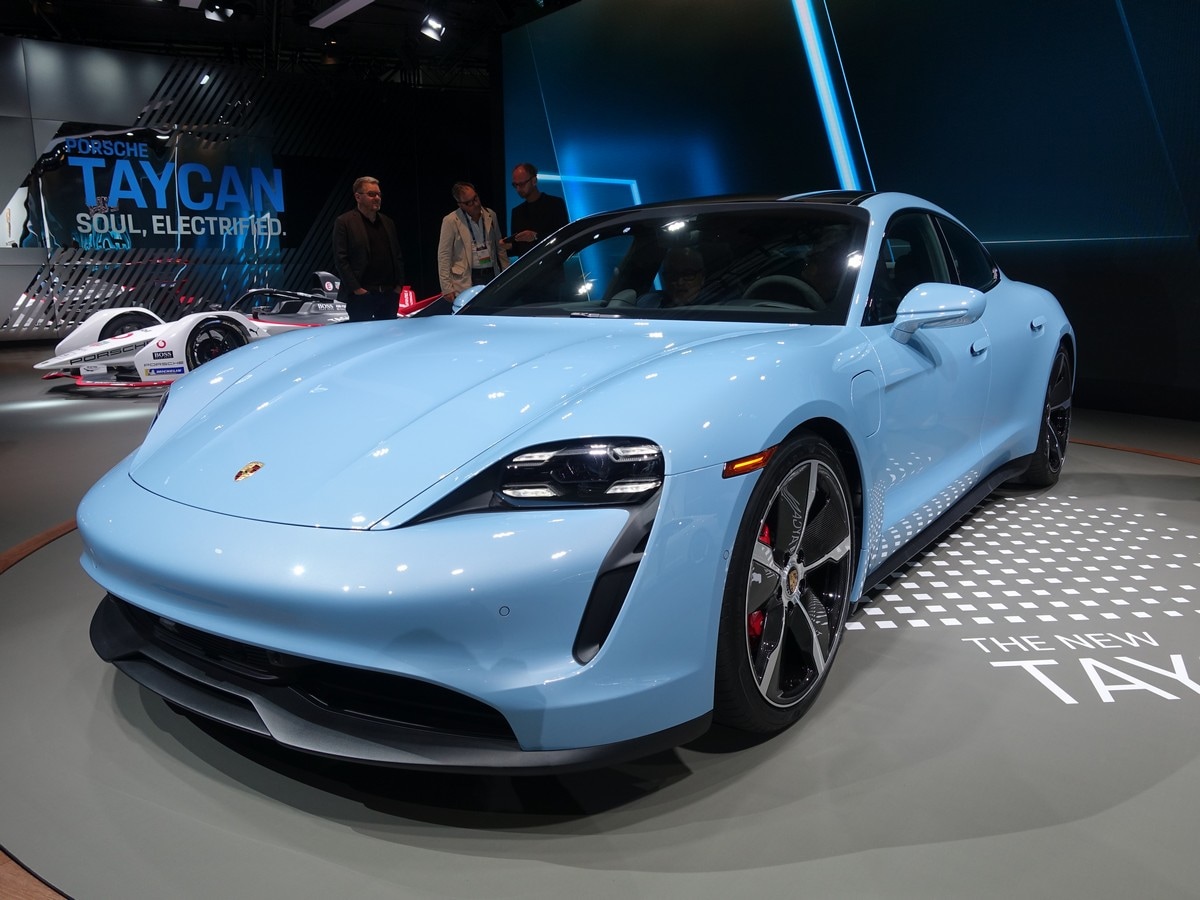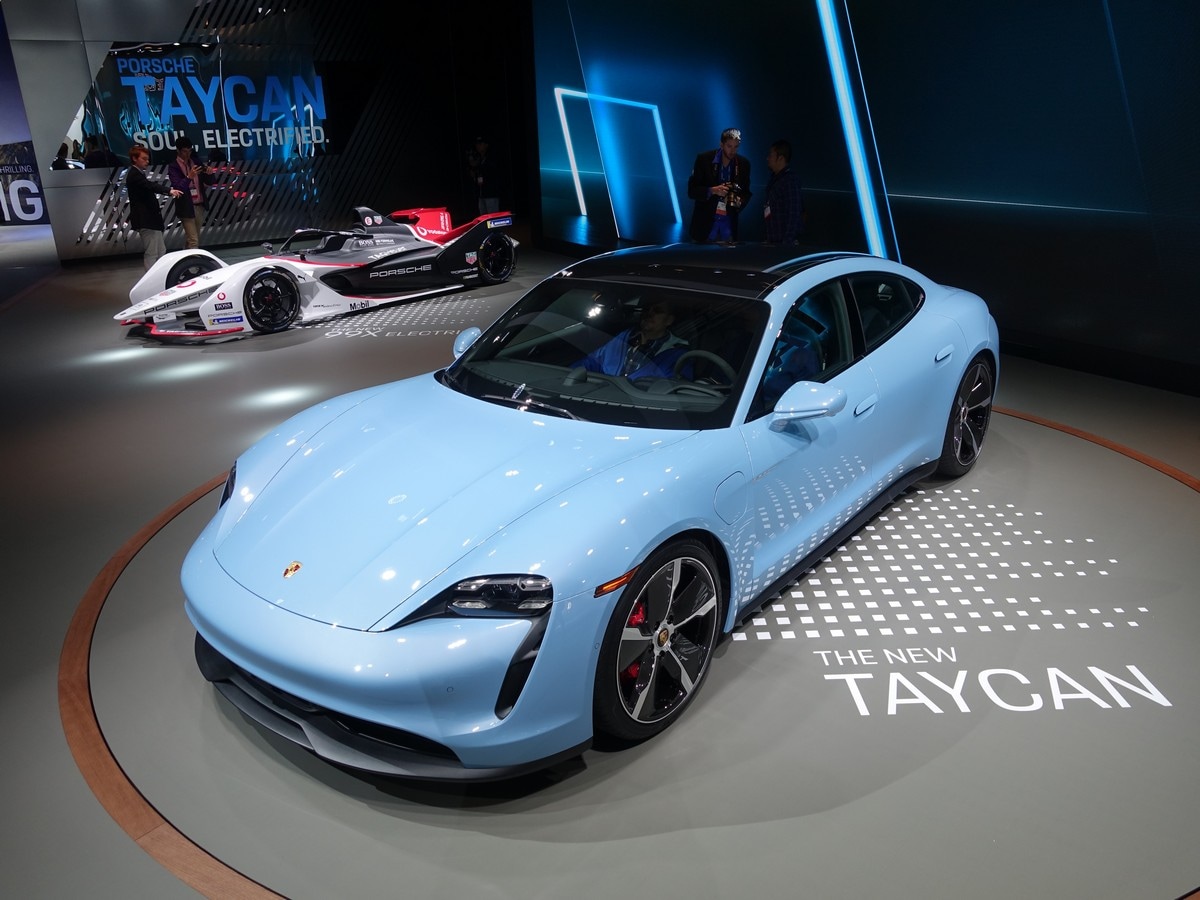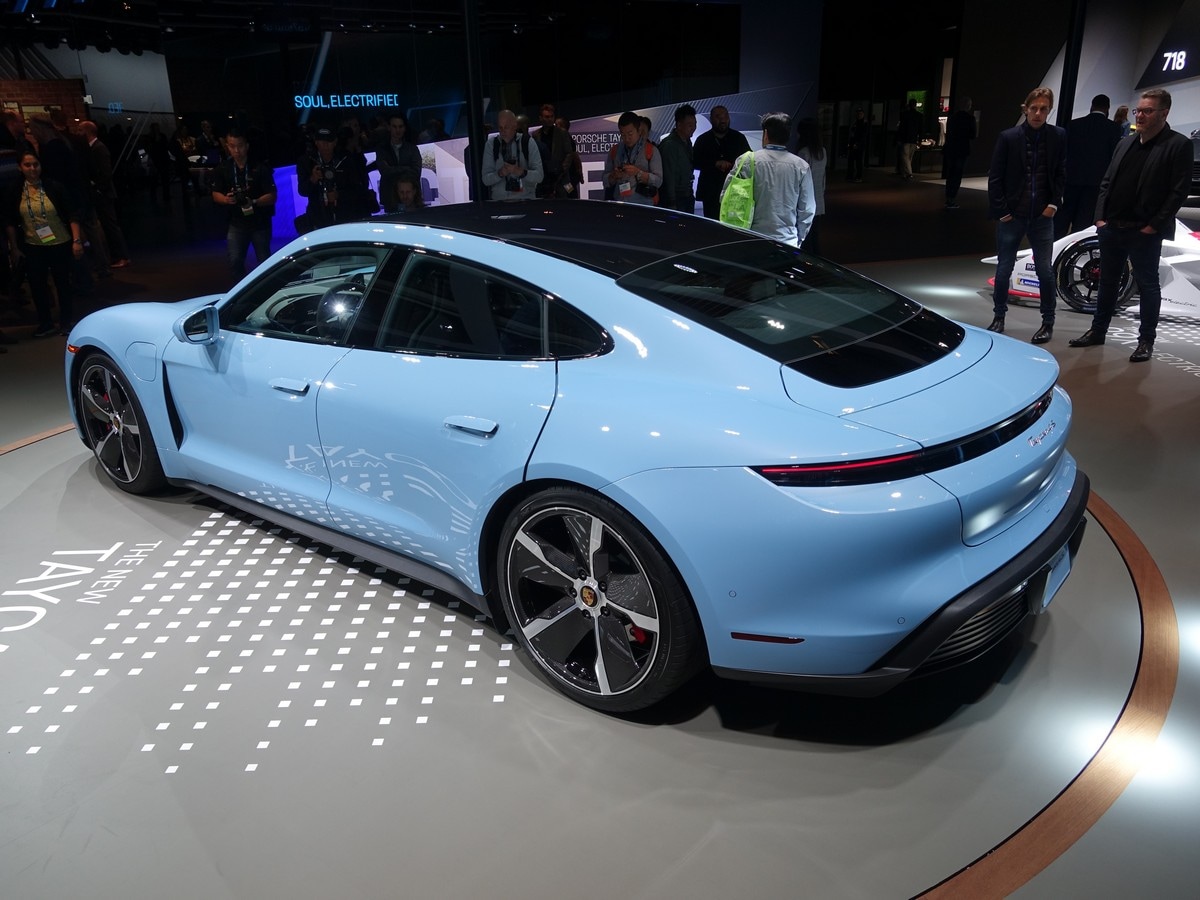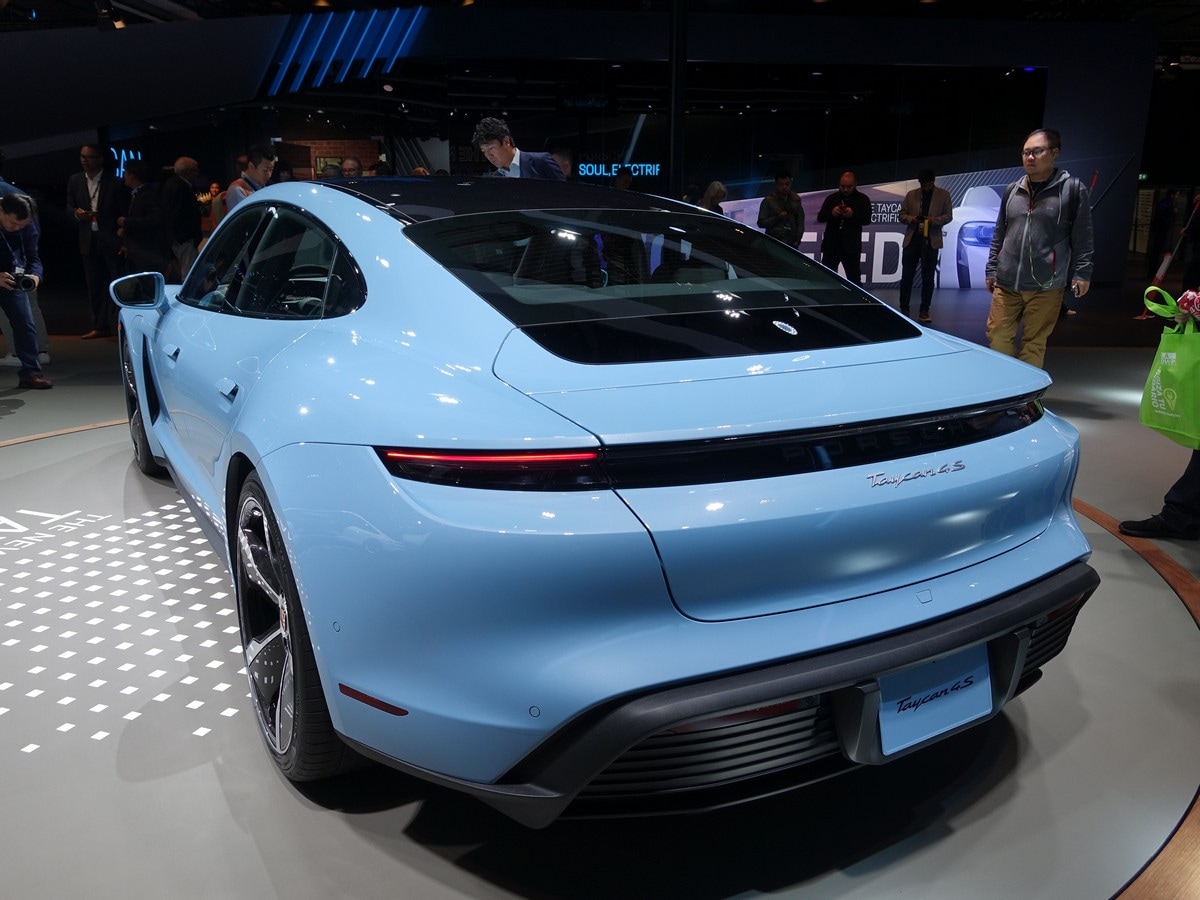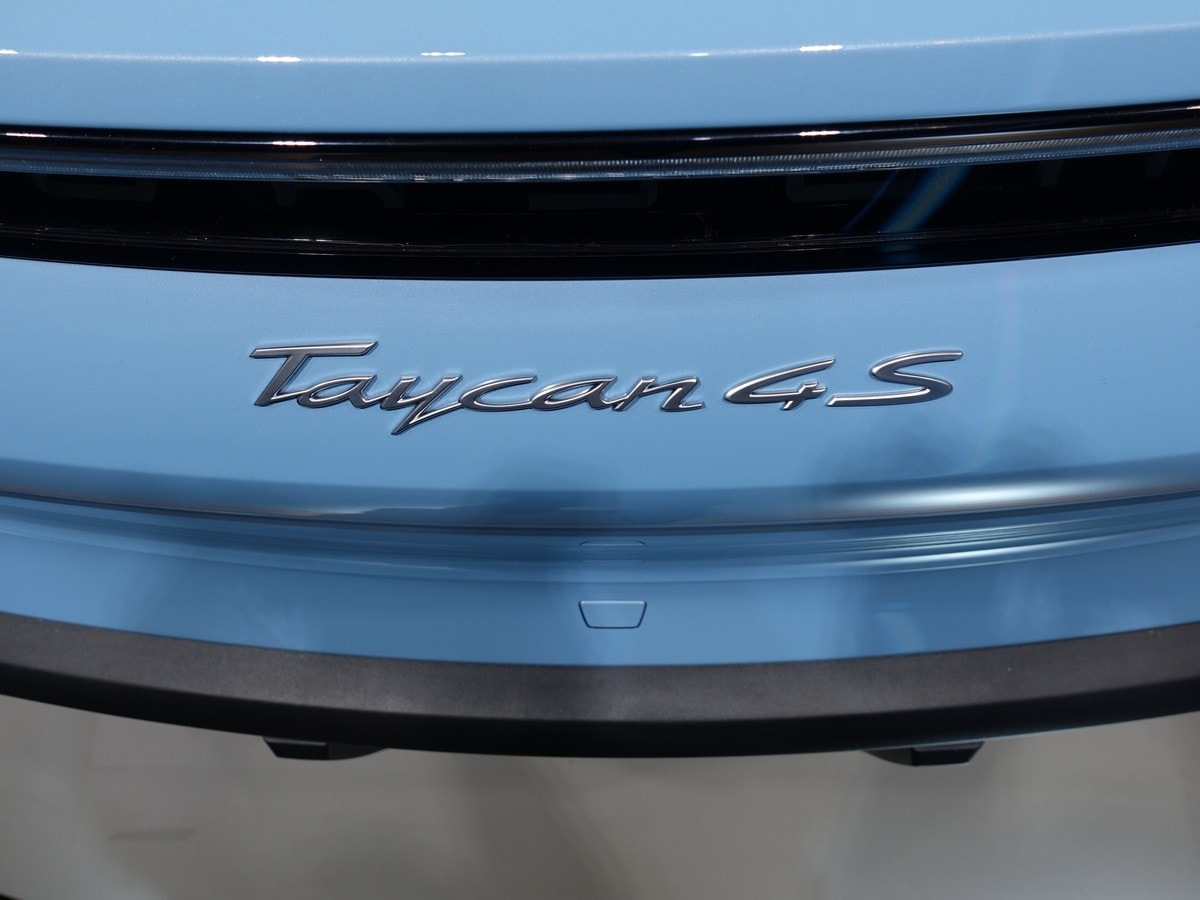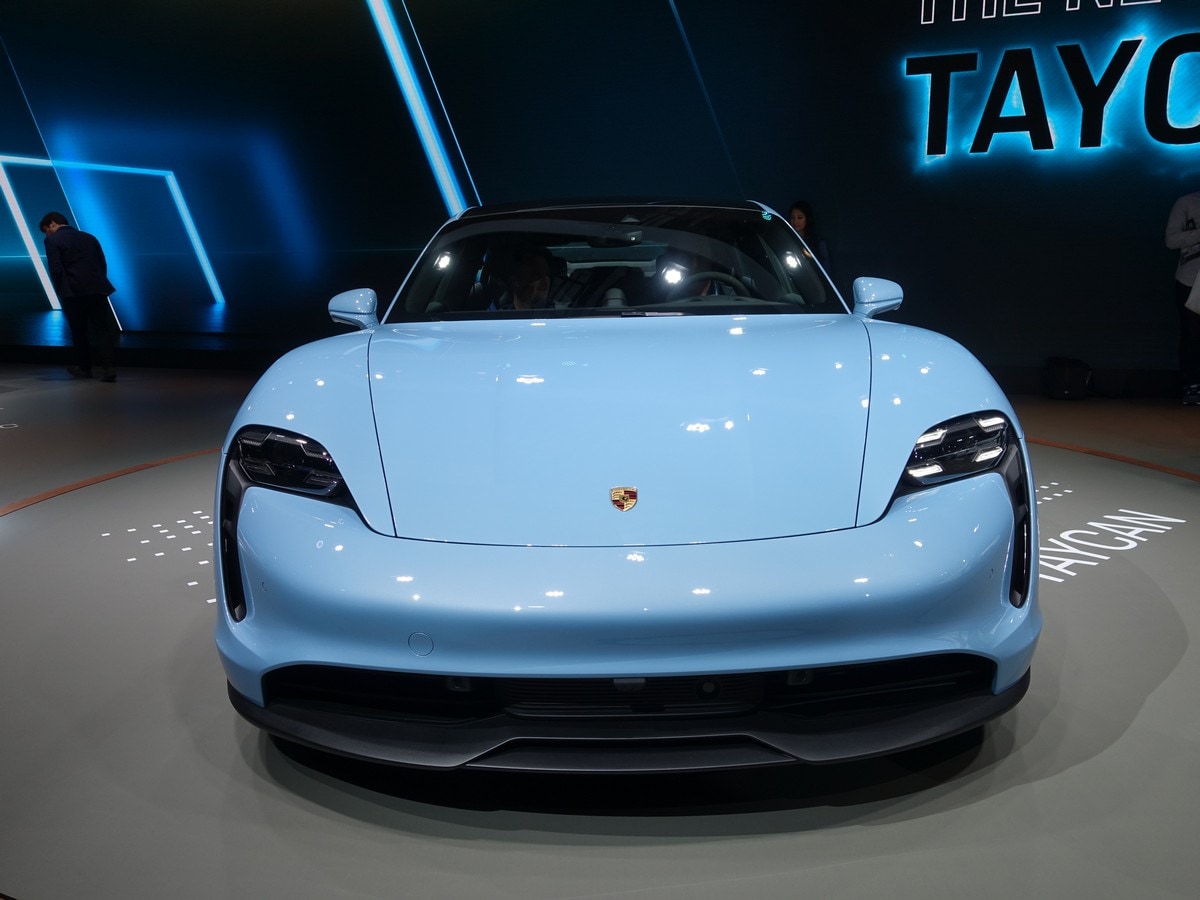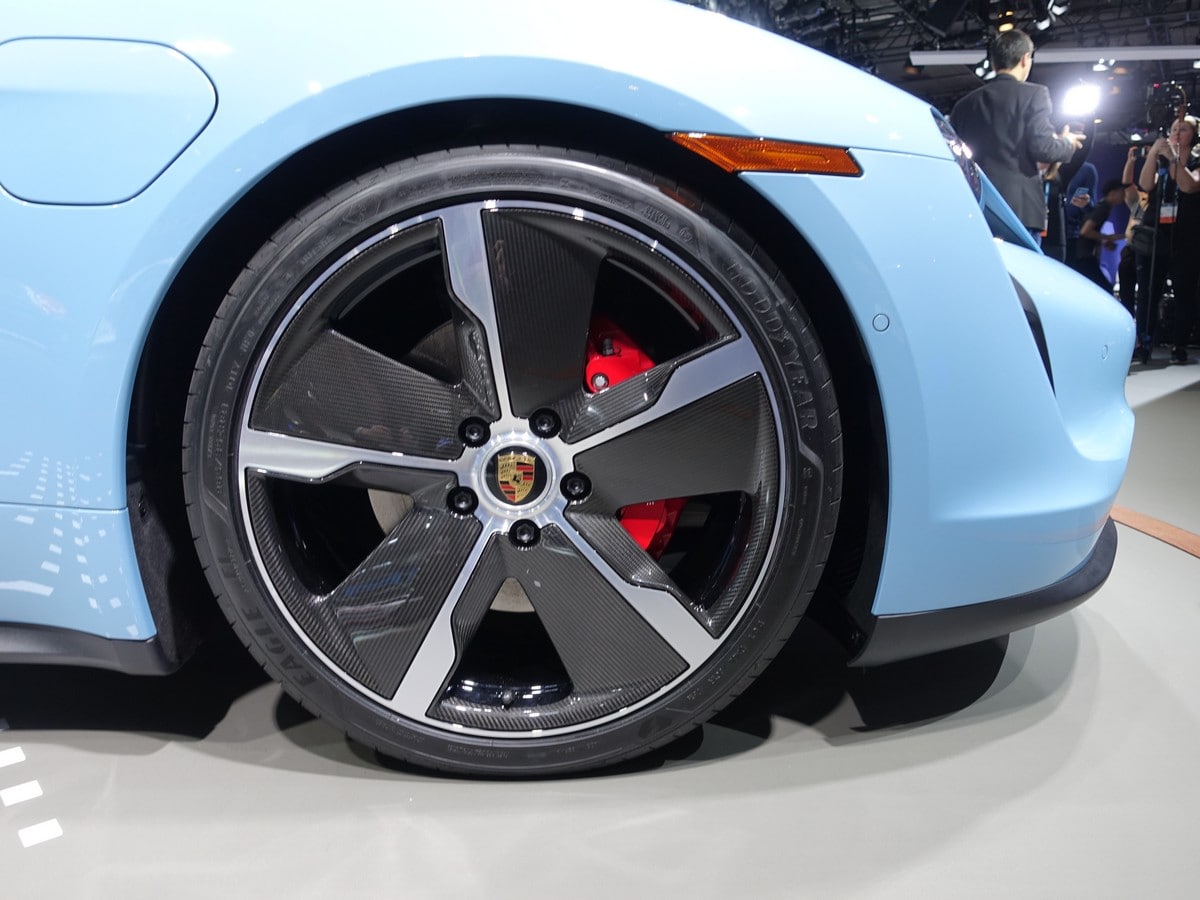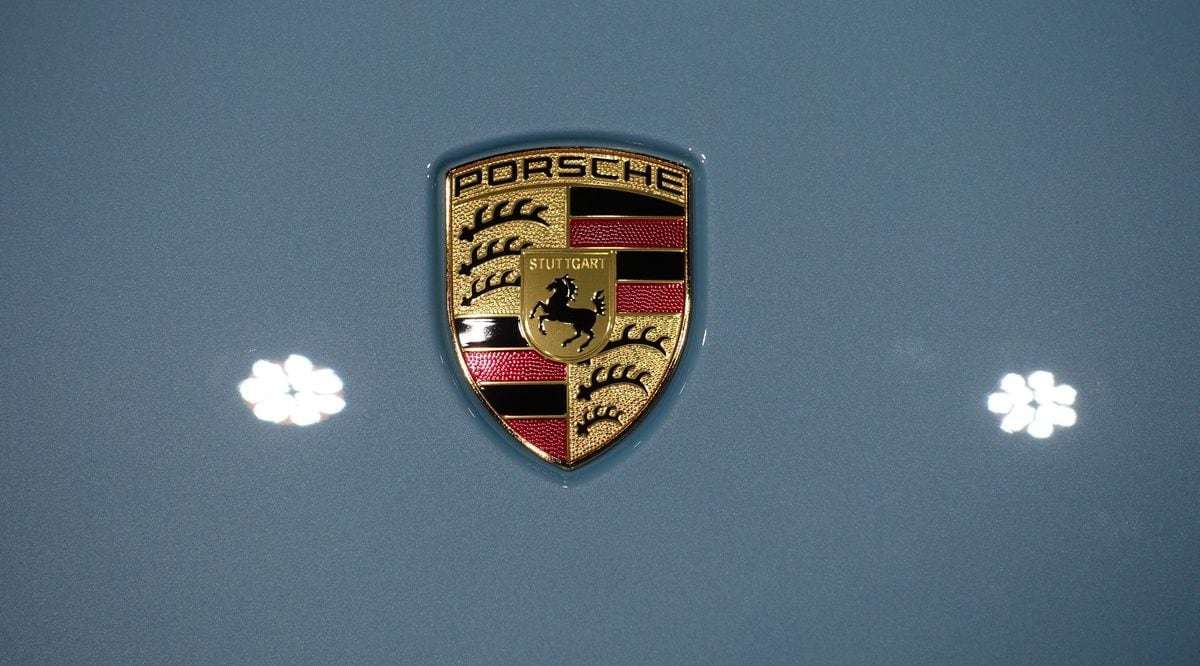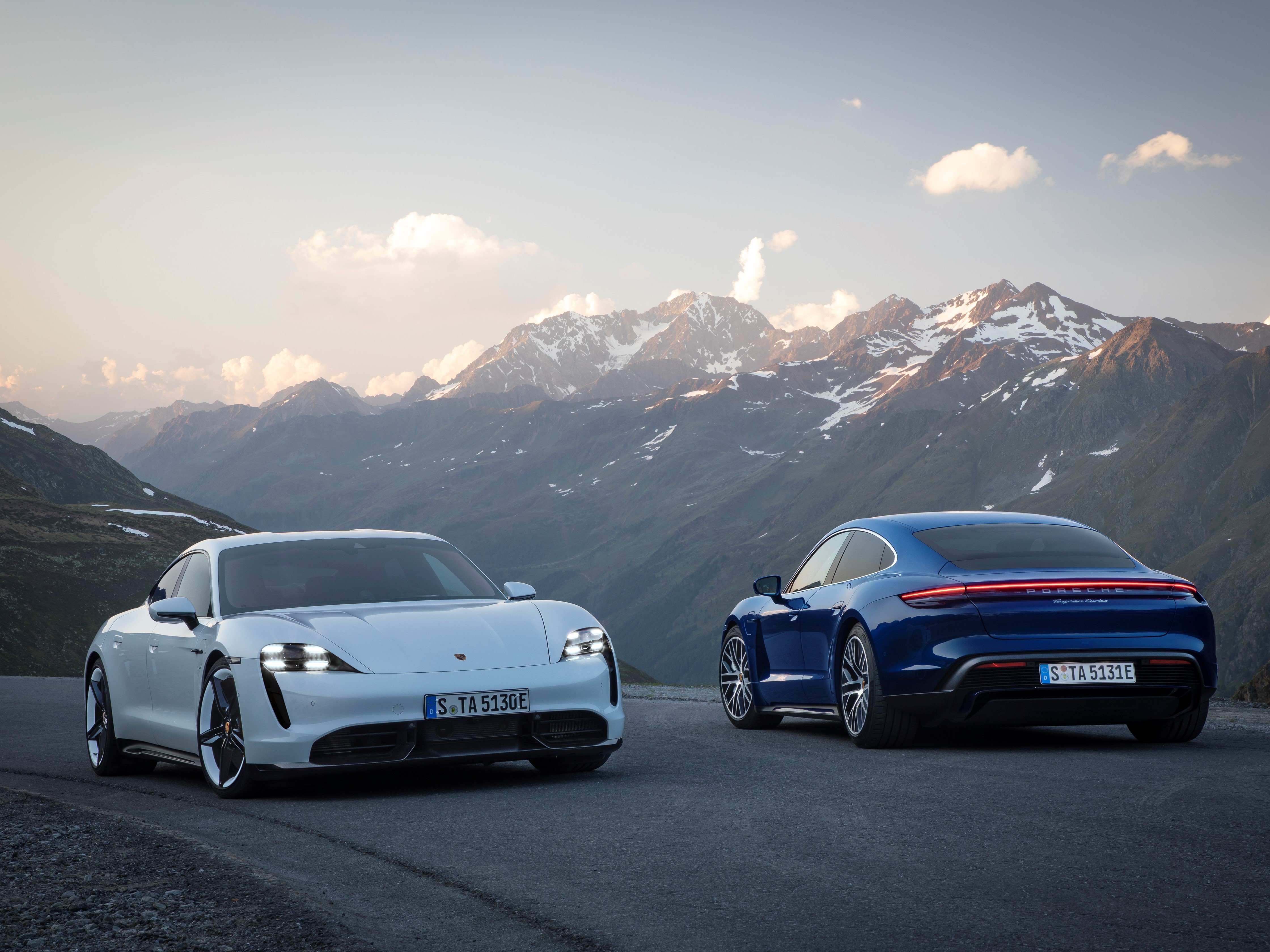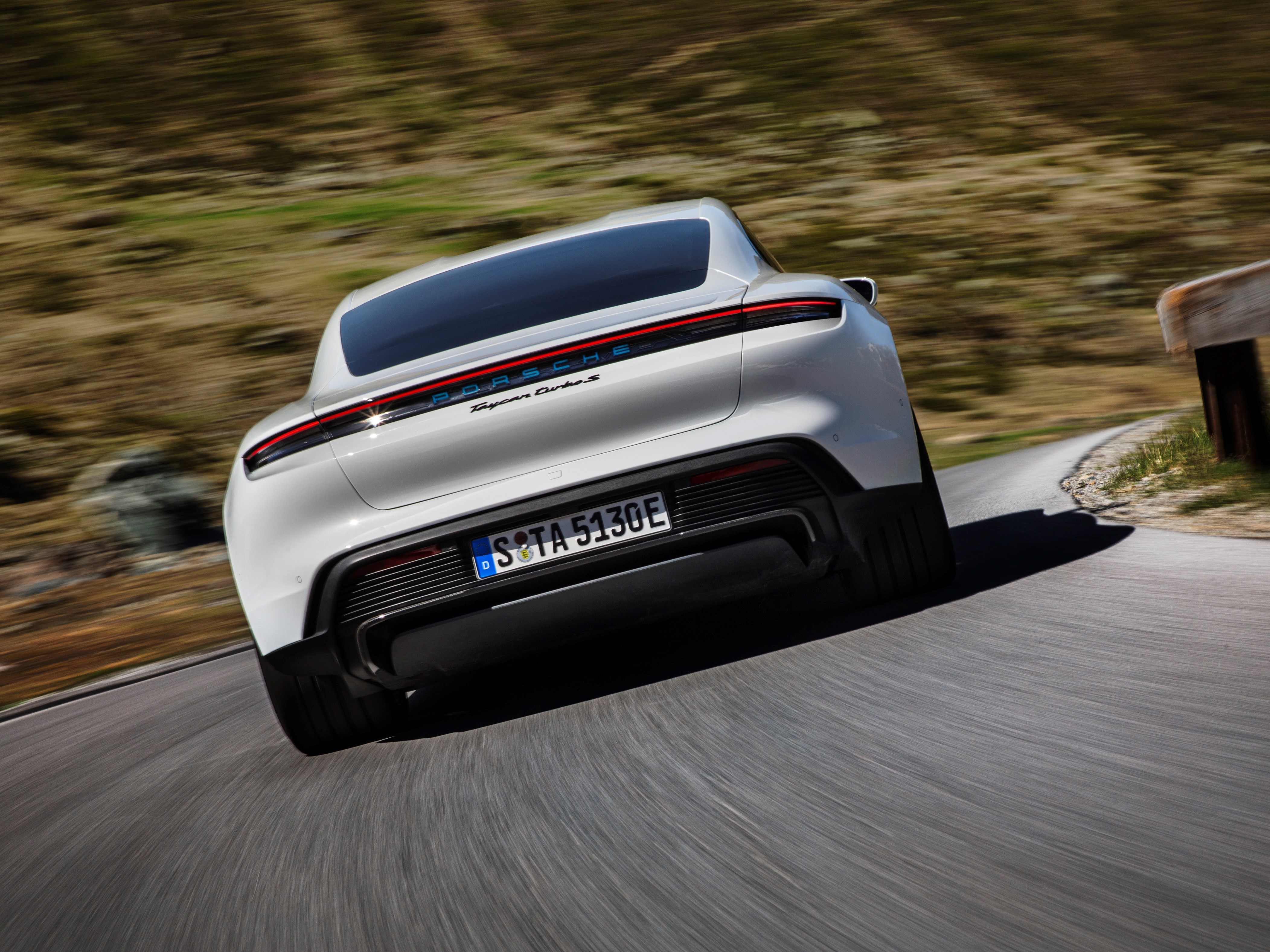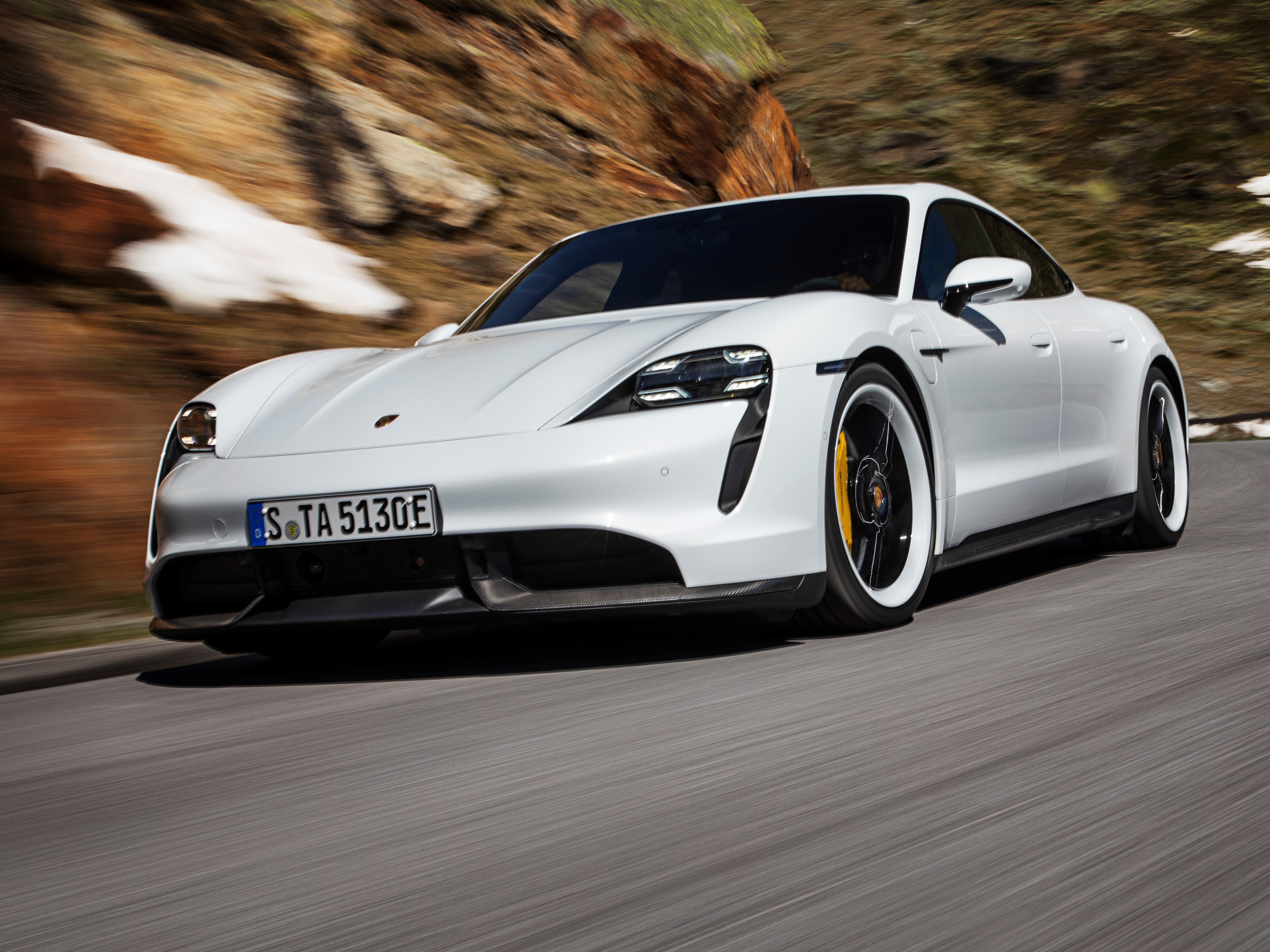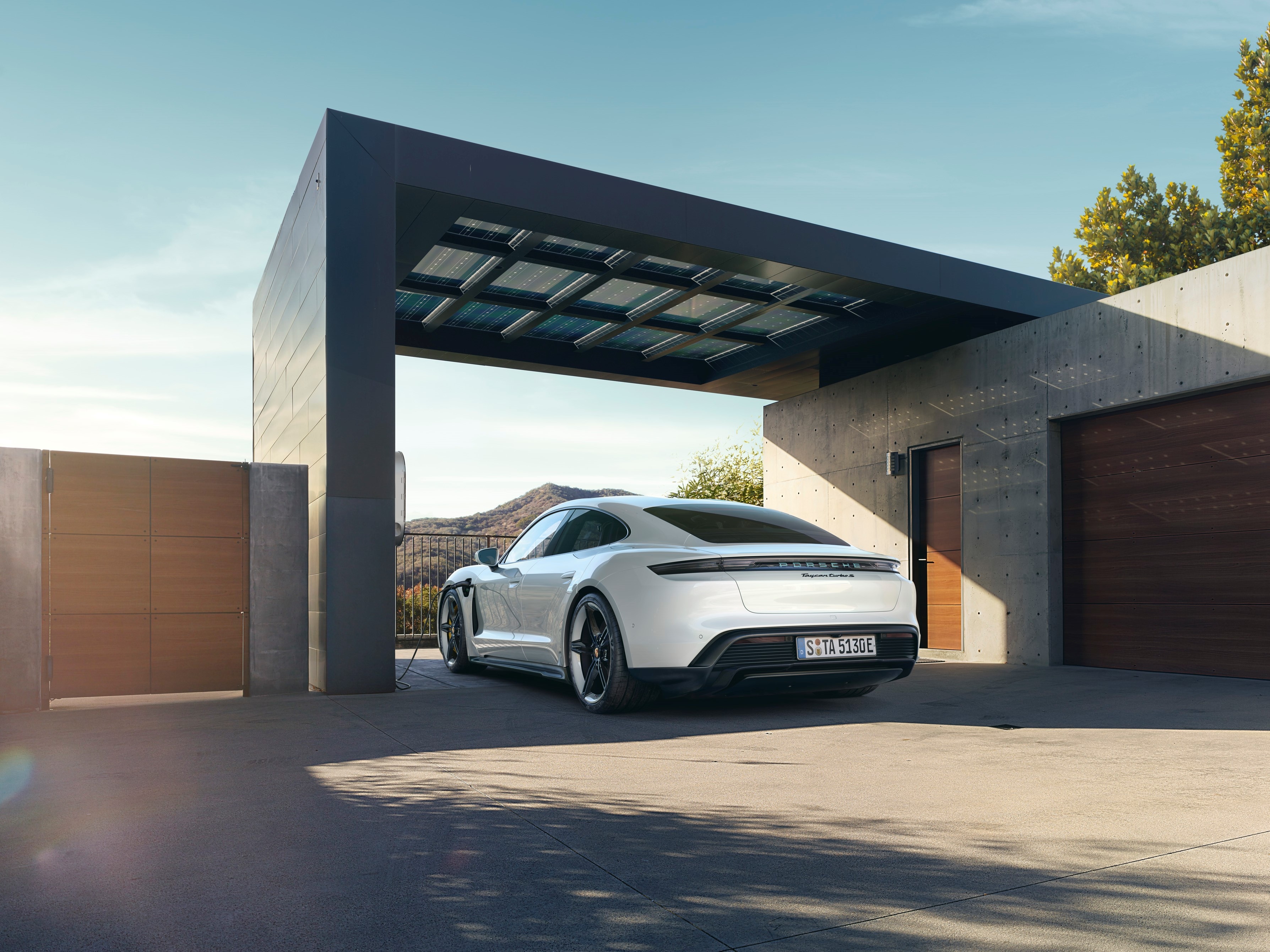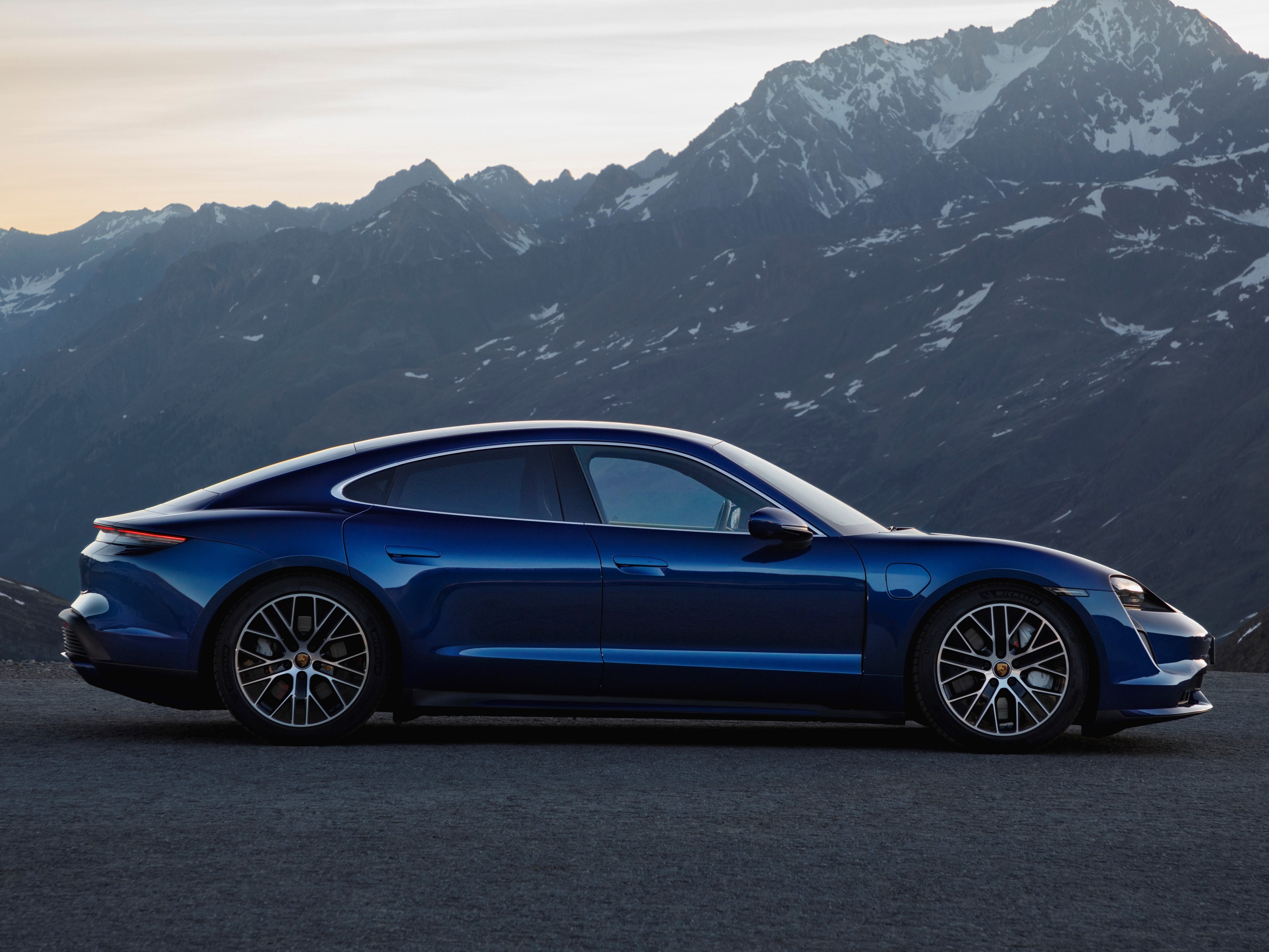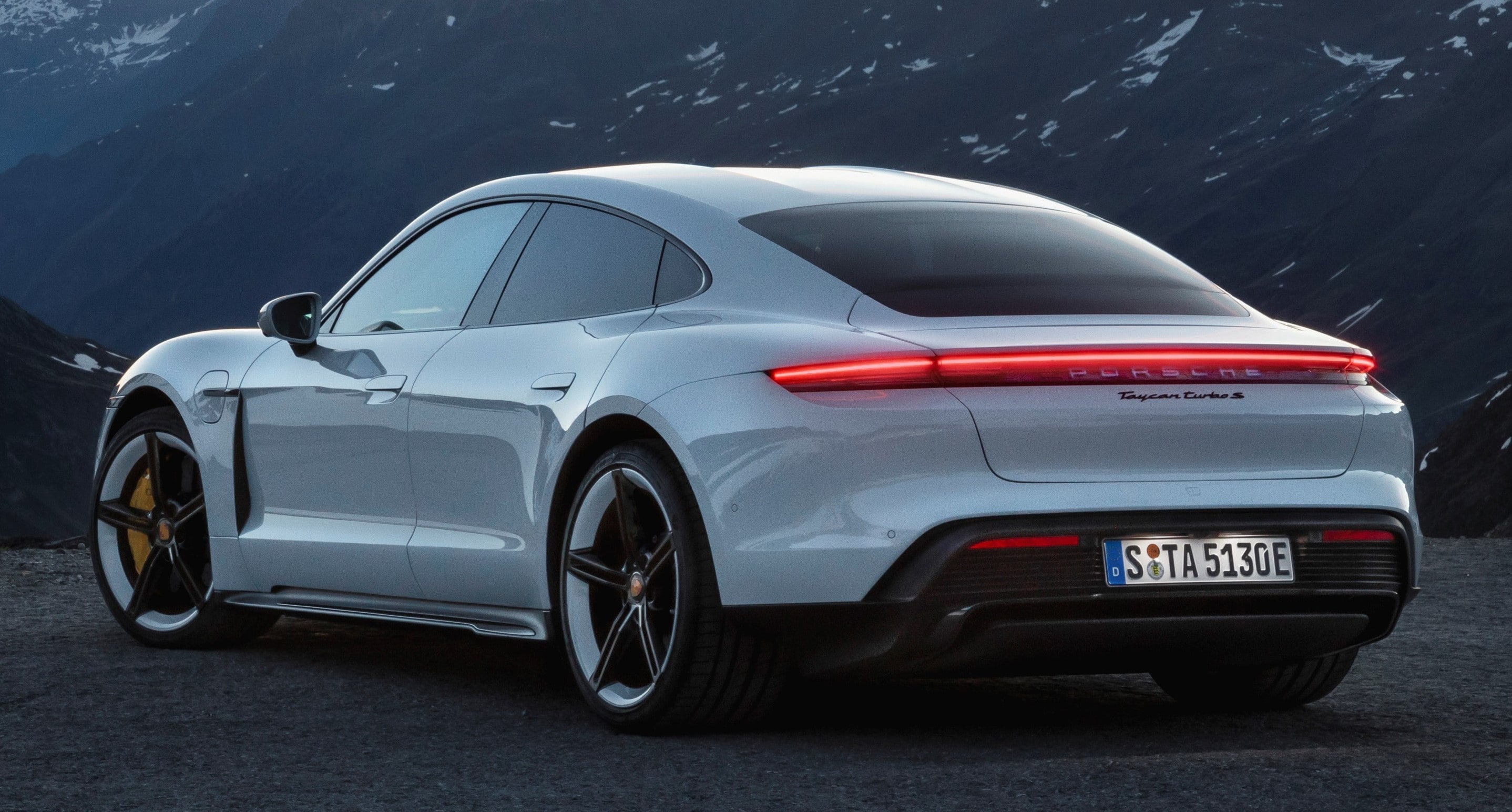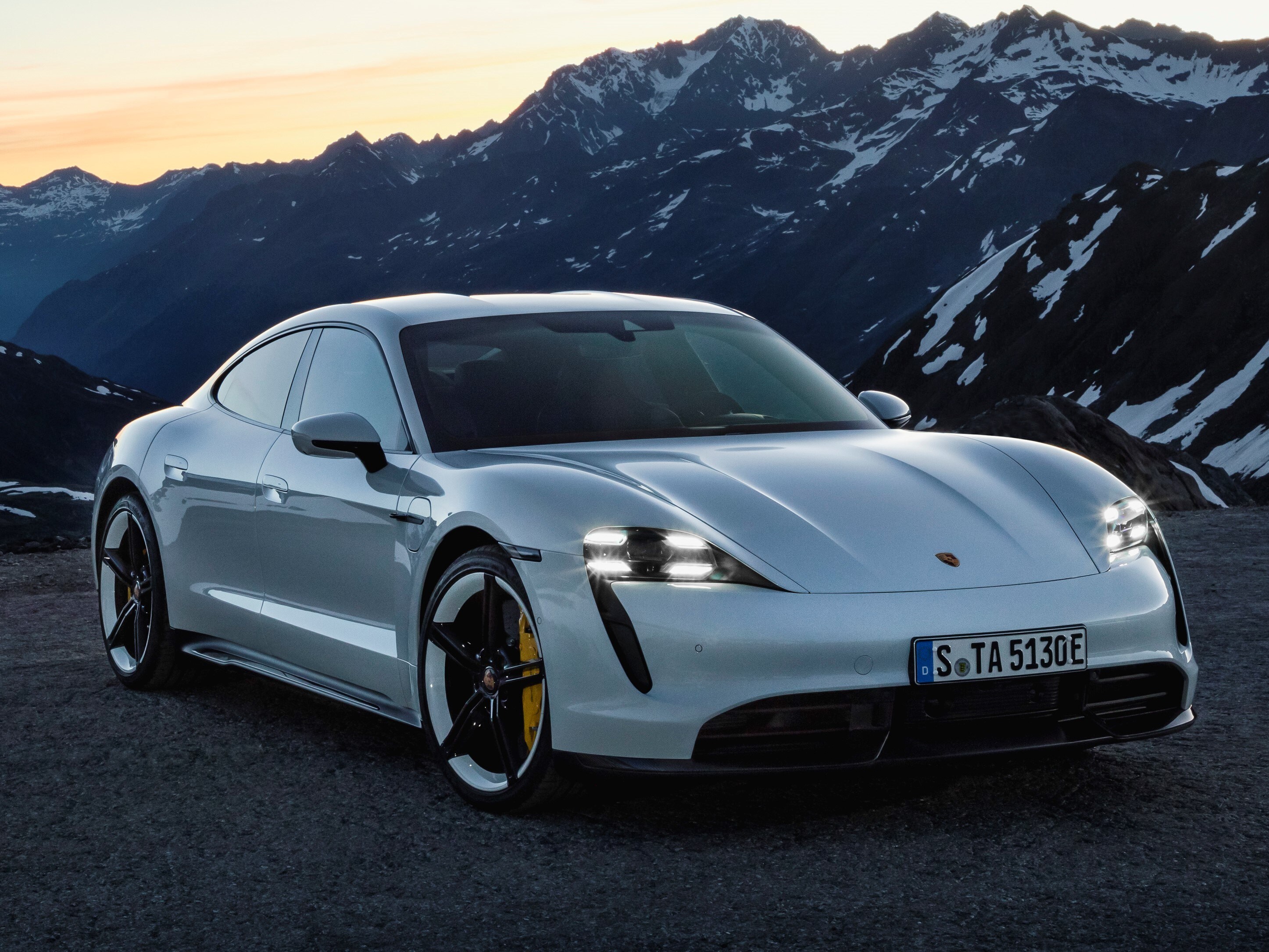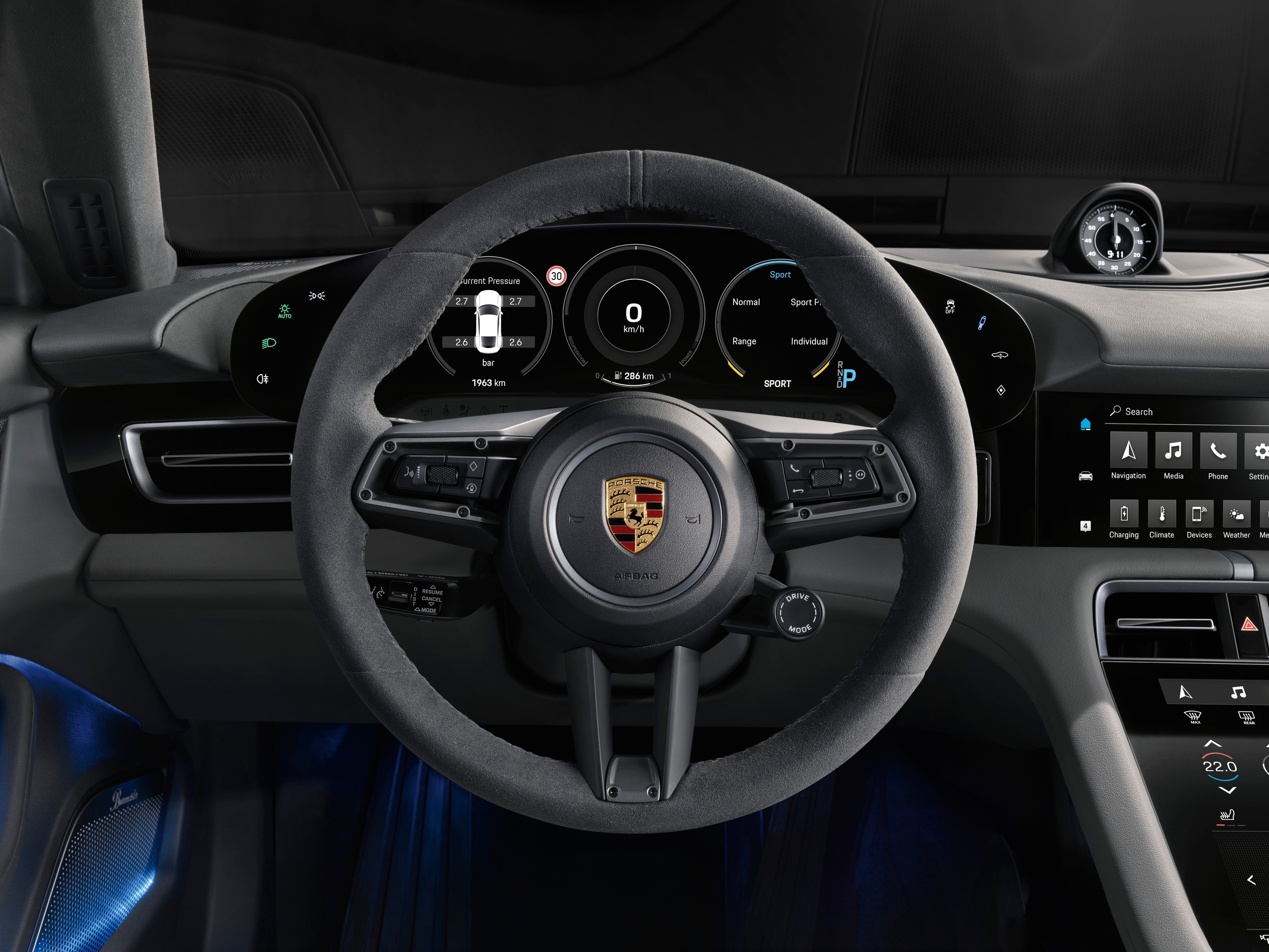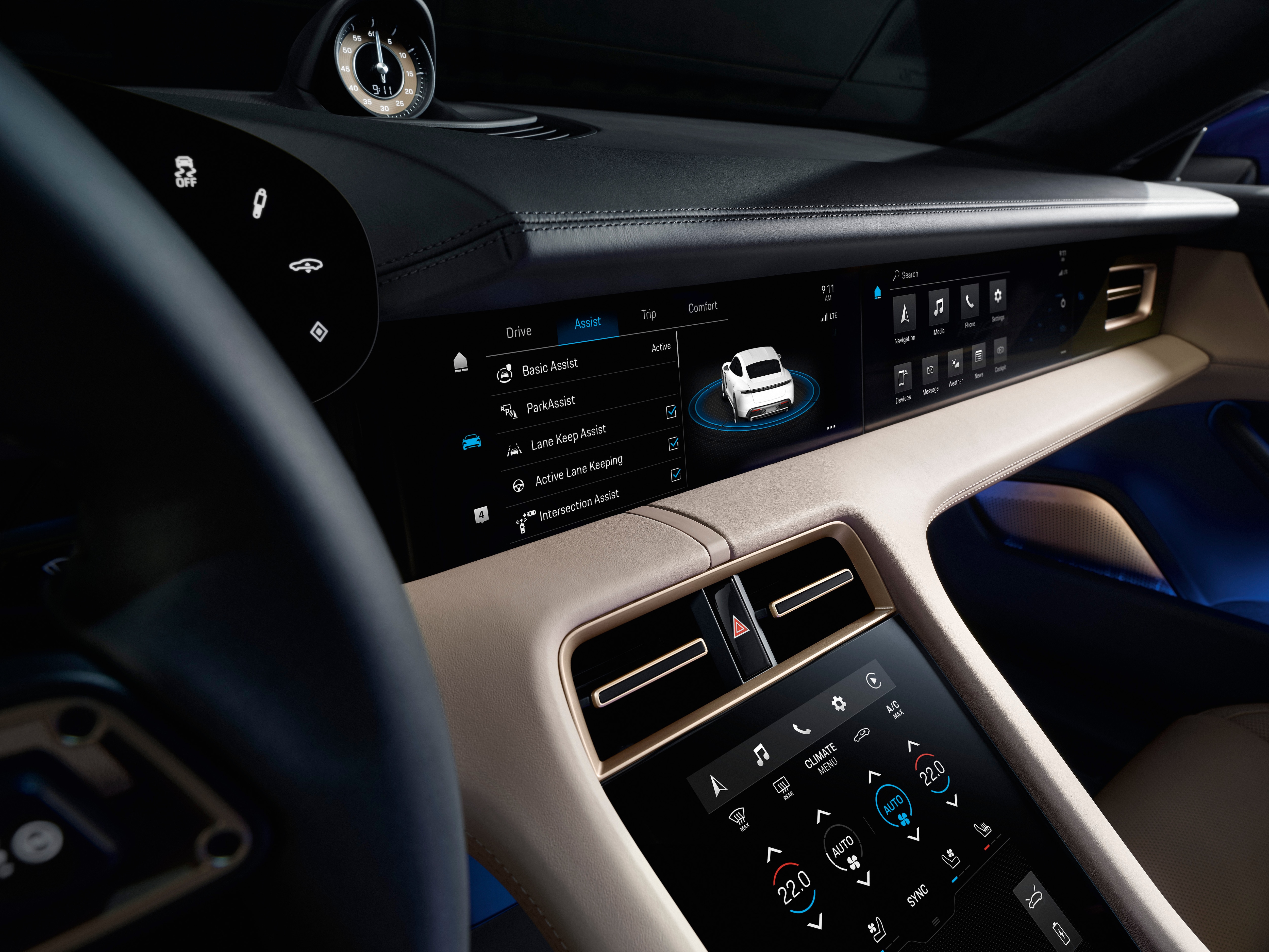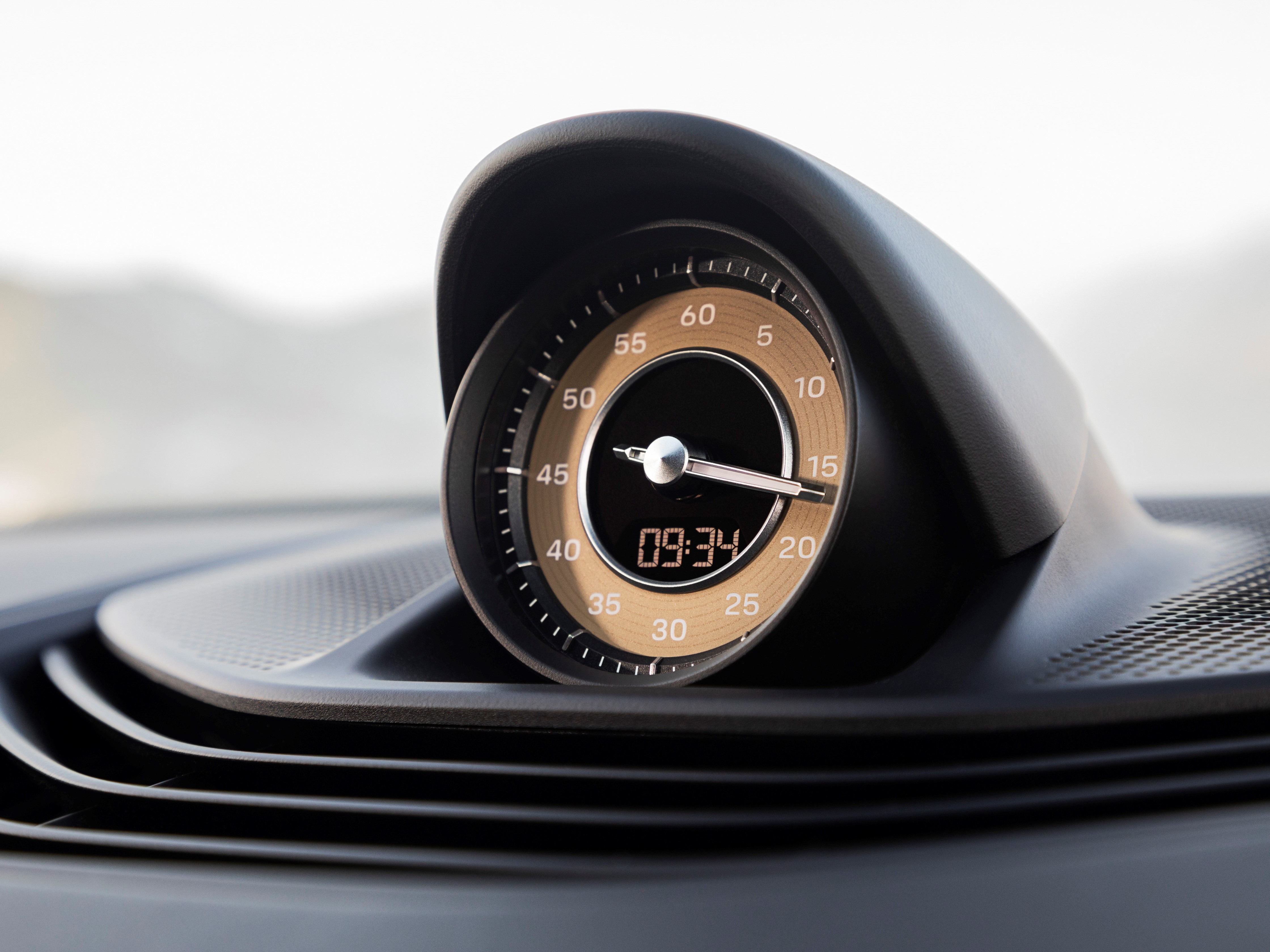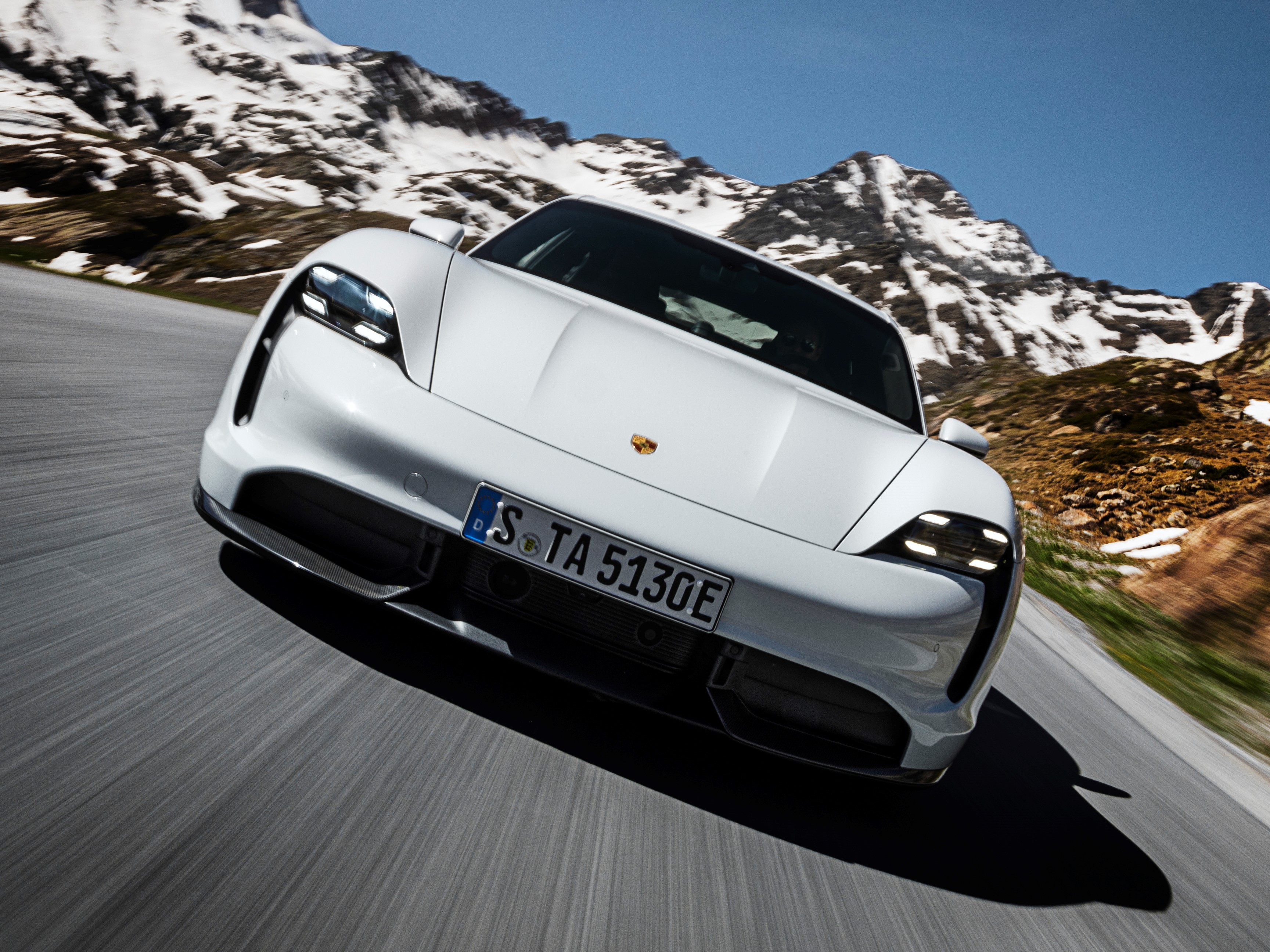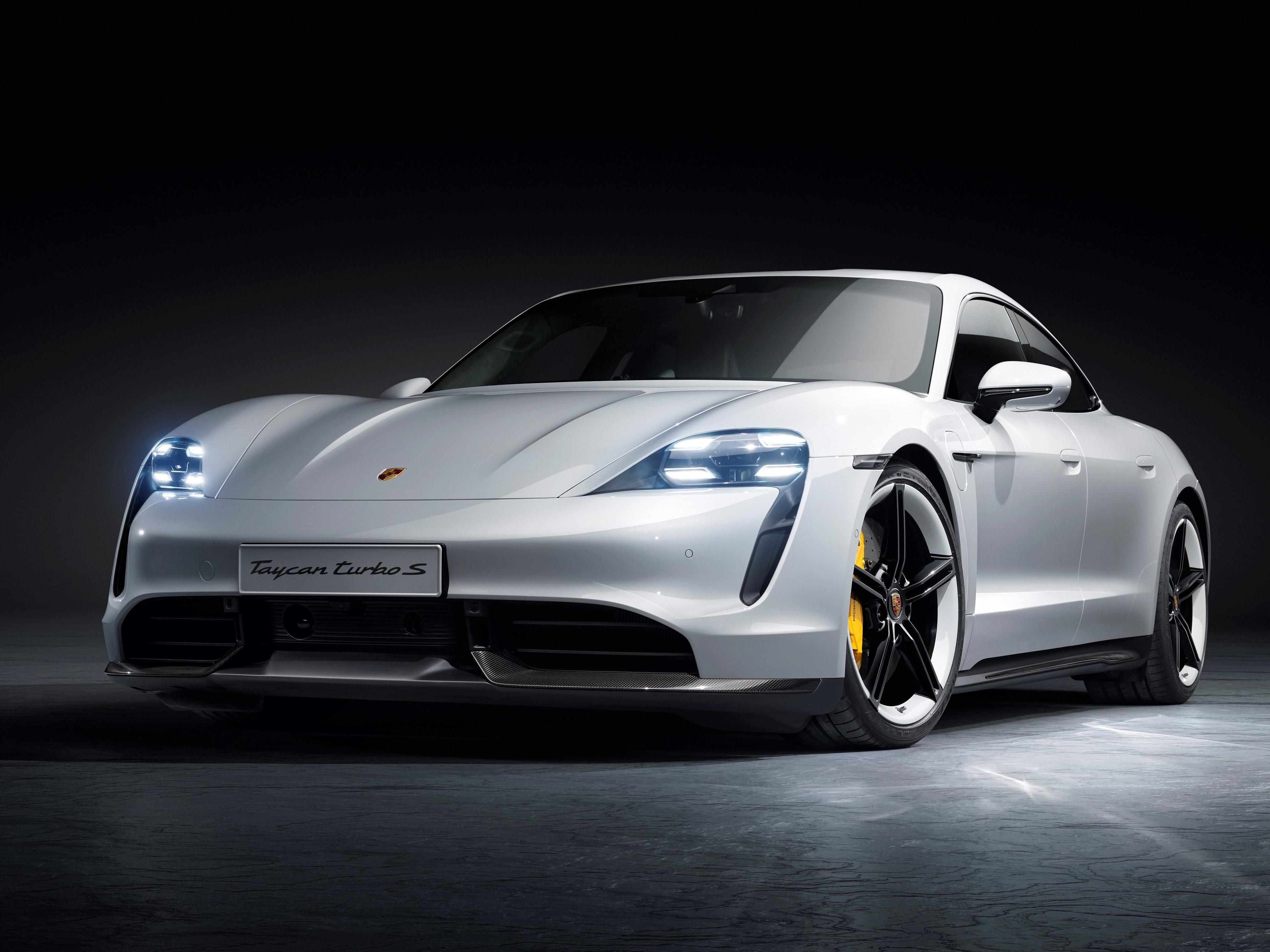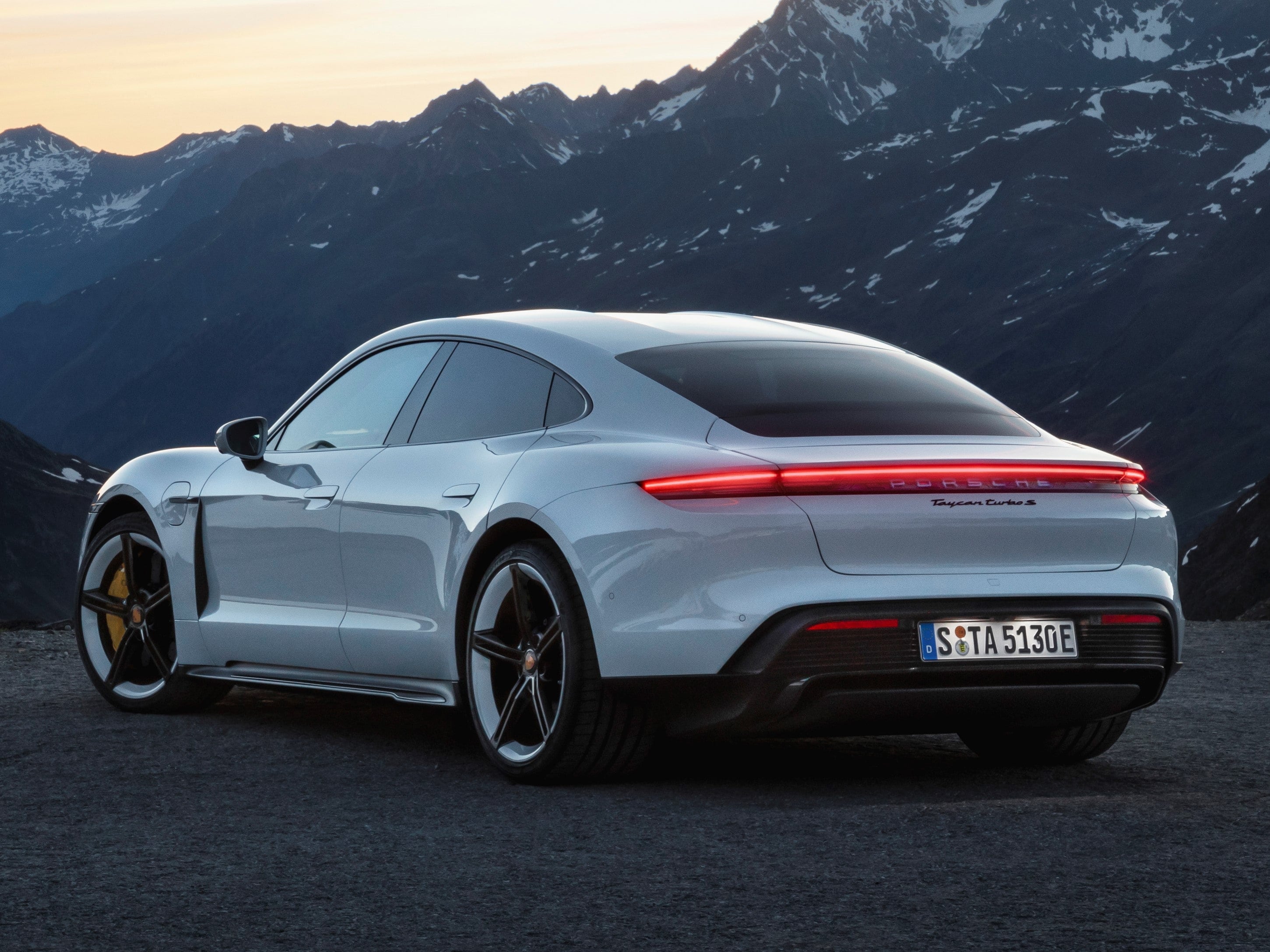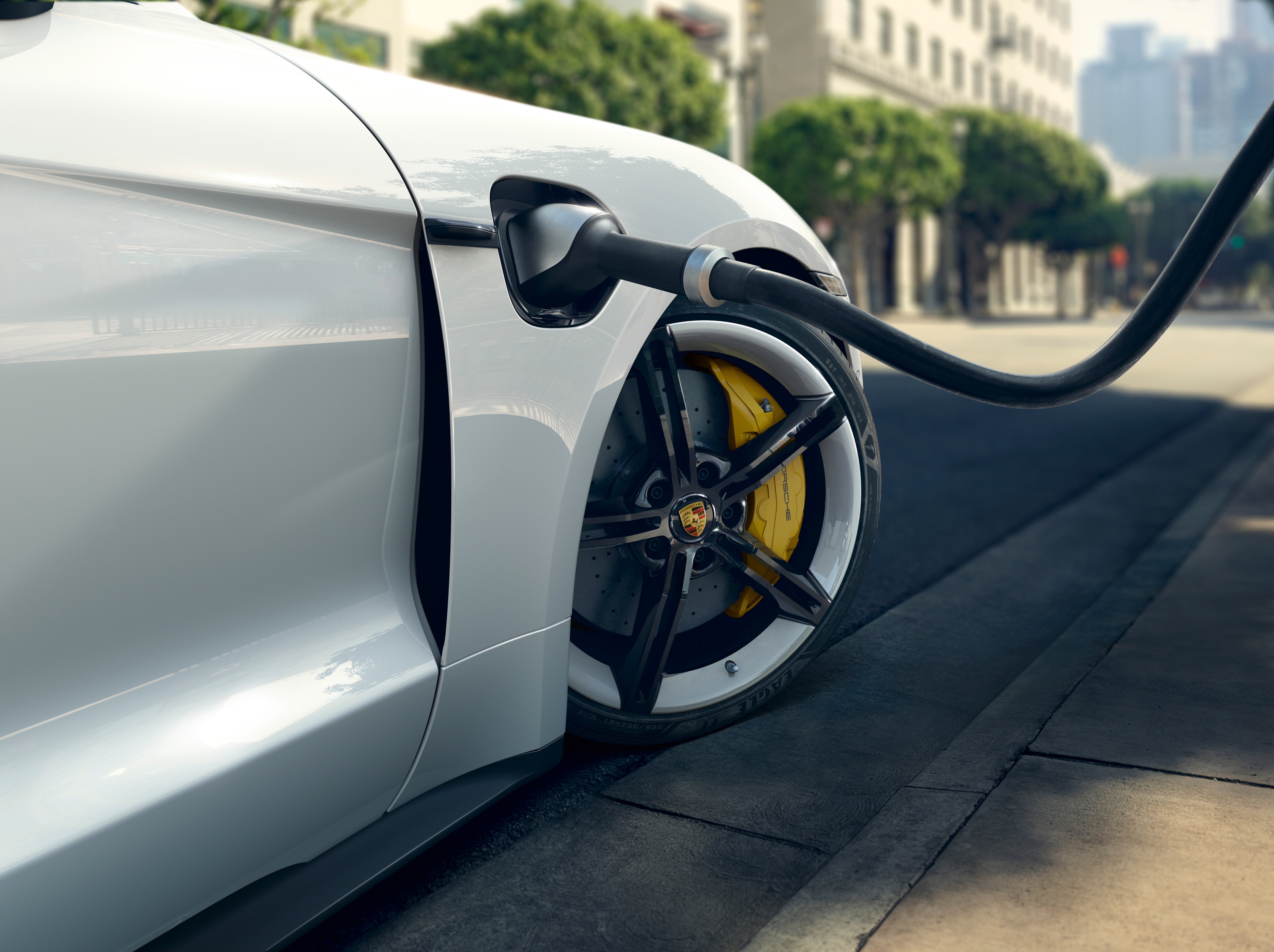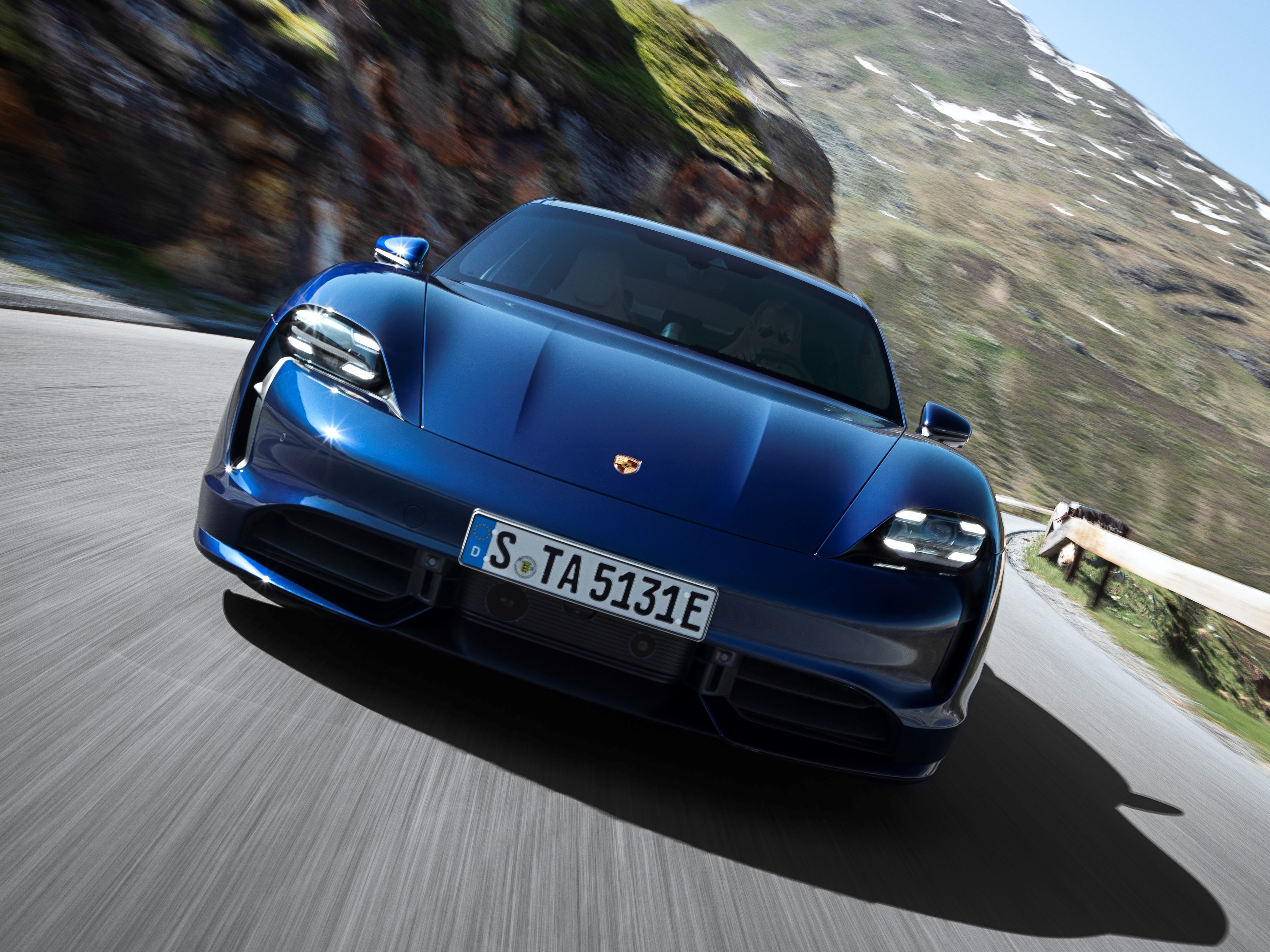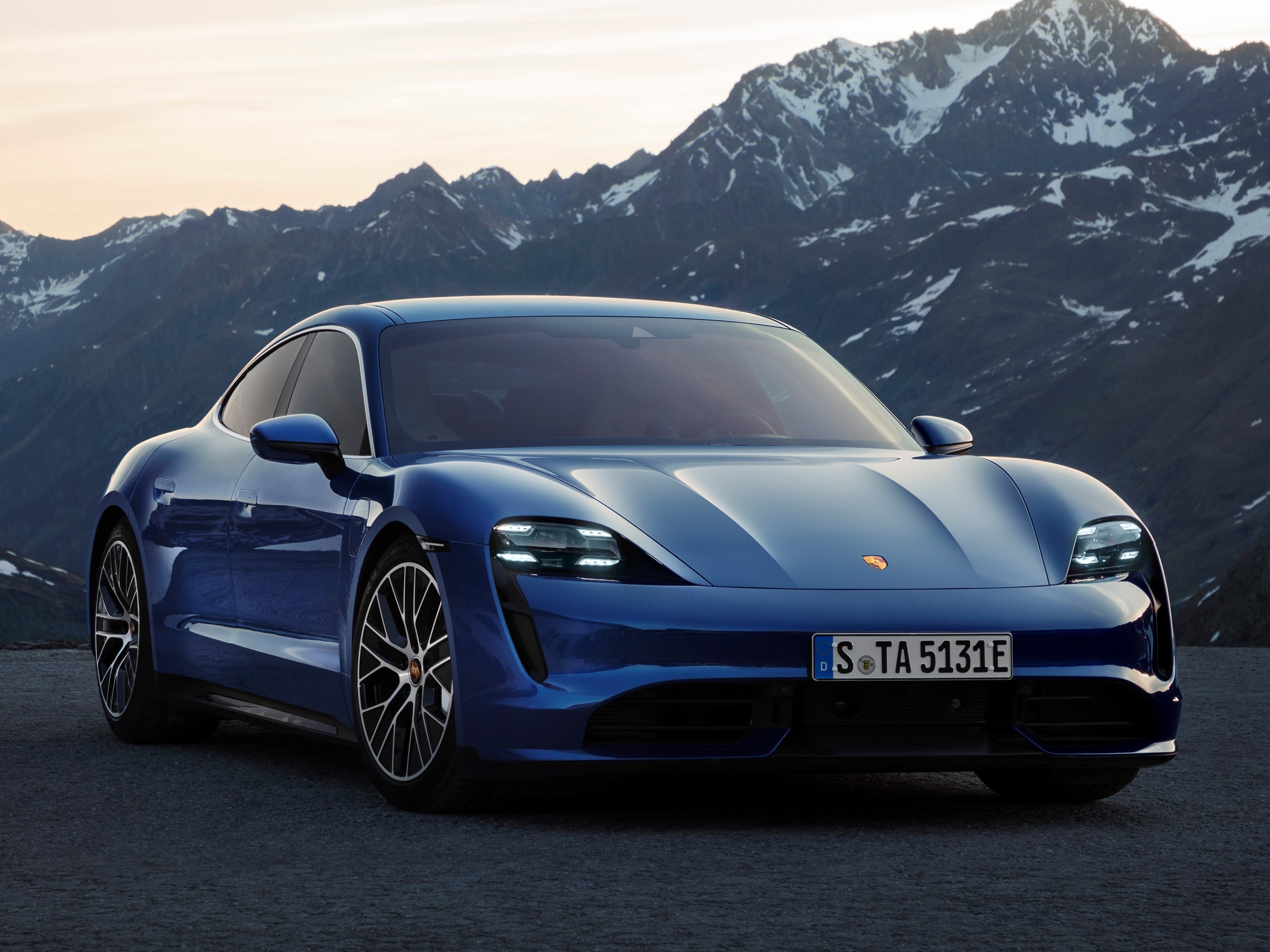- Porsche’s first pure-electric production vehicle
- Enthusiast-tuned performance and driving dynamics
- Innovative 800-volt system and DC fast charge
- Base price of $150,900
- On sale now, with deliveries in December 2019
Porsche wowed crowds at the 2015 Frankfurt International Motor show when it debuted the Mission E concept – a futuristic design study that hinted at an exciting performance-tuned electric automotive future. Four short years later, we are touring the Danish countryside in the all-new 2020 Porsche Taycan Turbo S. The sleek production sedan, which bears a remarkable resemblance to the 2015 Mission E concept, is the automaker’s first pure-electric production vehicle – a Porsche with no combustion engine.
But don’t think that Porsche, a brand synonymous with motorsports and racing wins, intends to move itself into the slow lane. The Taycan Turbo and Taycan Turbo S – its two launch trim levels – boast technical innovation and performance that vault them to the top of the performance segment. Eye-catching and ultramodern, the Taycan embodies Porsche’s move towards a future where combustion-free driving is enjoyable, engaging, and exhilarating.
800-volt system with 93.4 kWh battery pack
All electric vehicles feature a similar basic architecture of 400-volt battery packs. Yet leapfrogging the rest of the industry, Porsche is the first automaker to utilize an 800-volt electrical system. The higher voltage offers distinct advantages that include the ability for the engineers to use thinner wires, which lowers weight and helps packaging, and more powerful (and more compact) motors. There are 396 individual lithium-ion cells within the Taycan, which are arranged in 33 modules, for a combined storage capacity of 93.4 kWh. To optimize charging and discharging performance, Porsche closely regulates the battery pack’s temperature with liquid cooling and heating. The flat battery pack (aka “Performance Battery Plus”) is located at the very bottom of the chassis, within a waterproof armored cage for safety.
Charging times are important to electric vehicle operators, so Porsche has ensured that the Taycan may be charged quickly – at home and on the road. Owners with a Level 2 charging unit will be able to charge their Taycan to 100 percent overnight (the process takes about 9 hours) or replenish electrons during the day at the office. While on the road, a network of 270 kW DC fast chargers are capable of bringing the battery from 5 percent to 80 percent state-of-charge in just over 22 minutes – or add 60 miles of range in just five minutes – that’s a game-changer.
Two motors and a two-speed gearbox
Like many high-performance electric vehicles, Porsche Taycan Turbo models are fitted with two electric motors – one on each axle. Porsche has chosen to use liquid-cooled permanently excited synchronous motors (PSM), which are lighter and more efficient than common AC induction motors. The motor in the nose drives the front wheels with a compact, one-speed, planetary gear. The rear wheels are driven by an innovative two-speed gearbox – first gear improves low-speed acceleration while second gear improves efficiency and top speed.
Combined, the motors in the Taycan Turbo deliver 670 horsepower and 626 lb-ft of torque. The range-topping Turbo S boasts a maximum of 750 horsepower and 774 lb-ft of torque. Official EPA range numbers have not been released, but the Taycan Turbo is expected to deliver 250-280 miles of range on a single charge.
Despite their nomenclature, the Taycan Turbo and Turbo S are not fitted with anything even resembling a turbocharger (electric vehicles don’t need to compress intake air to improve combustion power). Notwithstanding the potential confusion, Porsche has chosen to use the curious naming convention to define a level of performance that its customers have come to expect – the “Turbo” and “Turbo S” models have historically been the fastest and most powerful Porsche trim levels. Thus, the new branding on the all-electric models (although unannounced, expect Porsche to follow with slightly slower, and less expensive, “4S” and “GTS” models in the near future).
Familiar controls and digital displays
Attractively blending technology and tradition, Porsche has deliberately chosen to welcome passengers into the cockpit of the Taycan with forward-thinking innovation and familiarity. While glass screens dominate the instrument panel and dashboard, many of the high-resolution digital projections on the displays are of eye-friendly analog dials. Ease of use, and immediately familiarity, were Porsche’s goals.
For the most part, the new technology doesn’t get in the way of functionality. Window and mirror controls are placed (as expected) on the doors, while cruise control, blinkers, and wiper controls are on column-mounted stalks. Toggling through the various digital displays is easy with the haptic touchscreens, or auxiliary dials on the steering wheel, and the operating system is intuitive. However, we found the primary audio volume controls (flush up-and-down arrows located on the panel just in front of cupholders) slow to respond and infuriating to use. The HVAC vents are also digitally operated, completely louver-less, without any directional interface or shut-off capability on any of the physical outlets. This requires all occupants to dig through digital infotainment menus to find the proper interface screen to control cabin airflow. The process is cumbersome, slow, and downright frustrating – and there’s no workaround.
Cabin offers 4- or 5-place seating with a frunk
With regards to passenger space, the Taycan is slightly less accommodating that the Panamera – the head, leg, and shoulder room up front is generous, but tall adult passengers will find the second row snug (your 6-foot, 2-inch, author was able to sit behind himself, but knees were resting on the seatbacks). Vision outward is excellent, even though the view straight through the rear-view mirror is vertically restricted (it’s not very tall). Generous-sized exterior mirrors, thin roof pillars, active safety systems, and comprehensive camera coverage ease lane changes, low-speed maneuvering, and parking.
The nose of the Taycan features a front-mounted trunk (or “frunk”) that is large enough to swallow a 20-inch roller suitcase or a few small bags. Complementing the frunk is a traditional rear trunk, with a power-operated decklid, that will accommodate four 22-inch rollers and a large backpack – enough luggage for four travelers.
A unique approach to battery regeneration
Electric vehicles recover energy by converting forward movement (inertia) into regeneration during deceleration. Lift off the accelerator, or apply the brakes, and the electric motor reverses its role and sends power back into the battery. Many electric vehicle automakers take an aggressive approach, meaning the vehicle will regenerate immediately when the driver lifts off the accelerator – the lift-off deceleration is so strong that the vehicle may be driven with just one pedal.
Porsche sees that as wasteful, as even the most efficient regeneration systems are only able to recover about 90 percent of the original energy. They also point out that skilled drivers use inertia for car control as carrying speed and maintaining forward movement are two primary objectives when performance driving. With that in mind, the Taycan glides effortlessly when the accelerator is lifted and regeneration is only active when the brake pedal is depressed – in much the same manner as a traditional combustion vehicle.
When activated, the Taycan’s regenerative braking system is very effective. In fact, nearly all braking up to 0.4 g’s of deceleration is done without using the physical calipers. Porsche estimates that 90 percent of day-to-day braking will be done purely with regeneration. During testing, the automaker noted that iron brake rotors were affected with surface corrosion – they weren’t being abraded during normal driving – so it made the corrosion-resistant Porsche Surface Coated Brake (PSCB) standard on the Turbo and Turbo S models. The Porsche Ceramic Composite Brake (PCCB) is optional.
Dizzying acceleration with a space-age audio track
Electric motors are known for delivering immediate torque, which explains the neck-snapping – startlingly instantaneous – acceleration of the Porsche Taycan. Utilizing launch control (simply spin the driving mode dial to Sport Plus, hold the brake with one foot and simultaneously floor the accelerator with the other), the Turbo S model will rocket from a standstill to 60 mph in a conservative 2.6 seconds (the Turbo model does the run in 3.0 seconds). Both vehicles genuinely felt faster. Spellbound by the adrenaline-inducing rush, we repeated the exercise more than a dozen times before our hapless passenger complained of a sore neck (the g-forces on the human body with that type of acceleration are unexpected – being mashed into our seatbacks over and over again even induced nausea).
Combustion vehicles wail, roar, or thunder under full throttle, but electric vehicles are predominantly quiet with the exception of the muted whine of the electric motors. Porsche has elected to amplify this sound and play it back, both internally and externally, as the Taycan’s soundtrack. At low speeds the sedan emits a pleasing deep digital hum. Higher speeds, and more aggressive accelerator use, introduces a louder motor whirl that increases in intensity – the sound is futuristic, thrilling, and – quite frankly – perfectly appropriate. By default, the augmented audio track is only active in Sport Plus mode. However, the “space sound” (it’s officially called “Porsche Electric Sport Sound”) may be toggled on/off in any mode through the infotainment screen.
Ground-hugging center of gravity pardons weight penalty
There’s no escaping an electric vehicle’s weight penalty – most tip the scales 1,000 – 2,000 pounds more than their traditional combustion counterparts – but Porsche has put the unavoidable mass to good use. By locating the battery packs low and in the center of the chassis, literally encapsulated in an armored belly pan, the Taycan is able to boast the lowest center of gravity for any production Porsche model (surpassing even the race ready GT3 RS).
One would assume that the Taycan would drive much like the Panamera, its 4-door hatchback sibling. But that’s far from the case – they are near opposites. While the Panamera feels stately and luxurious (as it should for a flagship model), the Taycan feels small and sporty from the driver’s seat. Neither are featherweights, but where the Panamera comes across as feeling bulky in tight twisty corners, the heavier Taycan feels downright svelte.
Class of 2020: All the New and Redesigned Cars, Trucks and SUVs
Despite a curb weight of nearly 5,100 pounds (about 1,800 pounds more than the company’s 911 Carrera S), the Taycan handles like an Olympic skier attacking the slaloms. Toss the Taycan into a corner and it settles immediately, without any bounce or bounding. Four fat contact patches (the Turbo S wears 21-inch wheels with 265/35-21 up front and 305/30-21 tires in the rear – the standard Turbo model has slightly narrower rubber) don’t give up an inch of slip. And, thanks to the immediate torque of the electric motors, the Taycan rockets out of the corners.
Porsche 4D Chassis Control, which is a centrally networked control system for the chassis, effectively manages the vehicle’s 3-chamber air suspension, Porsche Active Suspension Management (PASM) damper control, Porsche Dynamic Chassis Control Sport (PDCC Sport), and Porsche Torque Vectoring Plus (PTV Plus). The result is razor-sharp transitional handling and dynamic stability, yet a very pleasing ride – unquestionably sporty, but very comfortable.
Effortless acceleration and stability at Autobahn speeds
Most electric vehicles have just one gear, which is satisfactory for brisk low speed acceleration. However, the design means that performance drops significantly at higher speeds – most EVs are lethargic above 100 mph. The Taycan, with a 2-speed gearbox in the rear, has been engineered to overcome this issue. We drove the Taycan Turbo on Germany’s unlimited-speed Autobahn and found its acceleration unexpectedly brisk – there was an almost indiscernible drop in acceleration rate until it hit an electronically limited top speed of 165 mph (at that rapid velocity, we left a trail of wheezy combustion vehicles in our wake).
Credit the Taycan’s exceptionally low .223 Cd. (the sedan is one of the most aerodynamically slippery vehicles on the market) and active aerodynamics for the vehicle’s rock-stable mannerisms at triple-digit speeds. There was no noticeable wandering, wallowing, or instability at speed – hands-down, it is the most competent vehicle that we have ever piloted in excess of 150 mph.
Taycan offers an effortless real-world charging cycle
Combustion vehicle owners mindlessly fill their tanks full each time they visit a service station and then tote the extra weight around whether they need it or not – wasting fuel in the process. This routine is typical in the combustion world, but electric vehicle owners will have a more efficient different strategy.
Taycan owners will have a Level 2 charger at their place of residence, plugging-in each night and waking to a full charge each morning. For regular daily use, there will be no need to visit a high-speed charging station – owners who drive fewer than 225 miles a day may never have to.
Occasionally, owners will choose to take a long-distance road trip. They will program their destination into the Taycan’s navigation system and utilize the national DC charging network. While on the road they will stop every three or four hours, pausing for about 25 minutes each time, as they take on a quick 80 percent charge – the vehicle’s software will optimize charge locations and determine the ideal state-of-charge needed for each leg of the trip. In practice, the process is effortless and efficient.
How has the Porsche Taycan raised the bar?
The 2020 Porsche Taycan Turbo and Turbo S don’t drive like typical electric vehicles – most EVs feel, quite frankly, like fast golf carts. In sharp contrast to other manufacturer’s offerings, Porsche’s sedan feels every bit as substantial as the company’s own Panamera, and every bit as sporty as its 911. While build quality is excellent, and the options list is extensive, more important to an enthusiast is the fact that the Taycan’s electric propulsion doesn’t get in the way of driving – actually, we’d argue that its seamless implementation improves the behind-the-wheel experience.
Driving an electric vehicle used to mean compromise, especially when it came to driving dynamics and performance. But Porsche has challenged those concessions and delivered a world-class sport sedan, with premium build quality and a luxurious interior, that rivals any combustion peer. Many decades ago, Porsche set the sports car benchmark with its rear-engine 911. The all-new Taycan, a combustion-free sport sedan, exemplifies the equivalent achievement in the pure-electric segment.
How much does the 2020 Porsche Taycan cost, and when does it go on sale?
The 2020 Porsche Taycan Turbo has a base price of $150,900 (plus a $1,350 delivery fee). The Taycan Turbo S starts at $185,000 (plus delivery). The sport sedan is on sale now, with first customer deliveries expected in December 2019.
